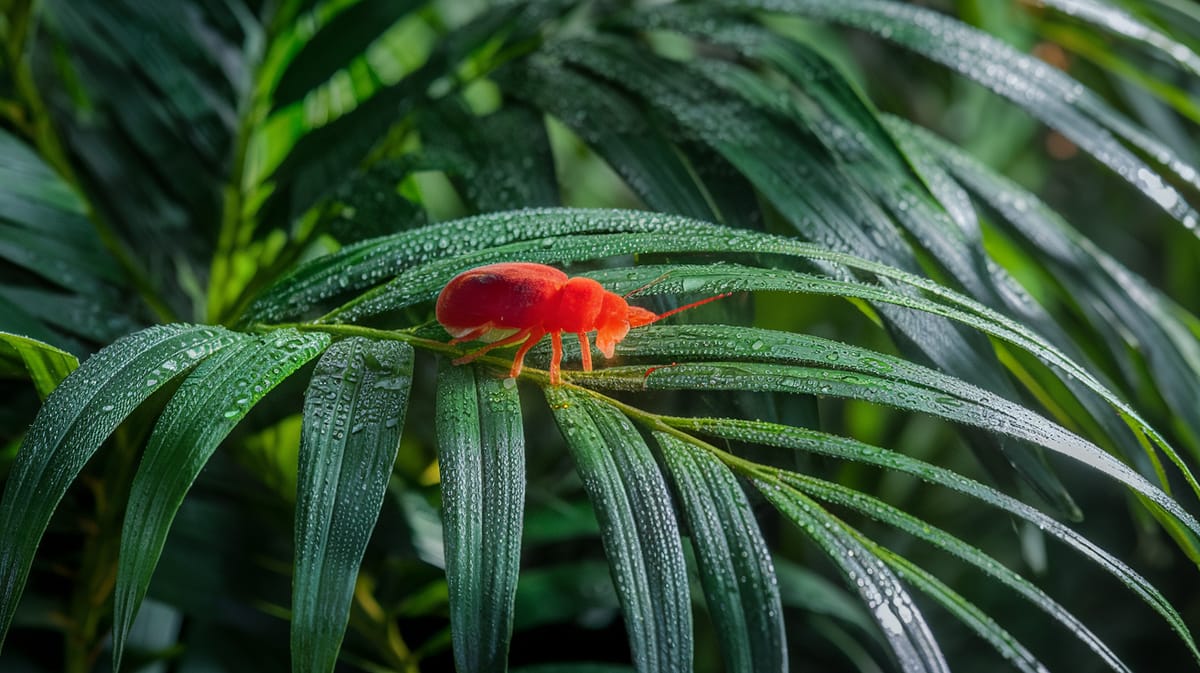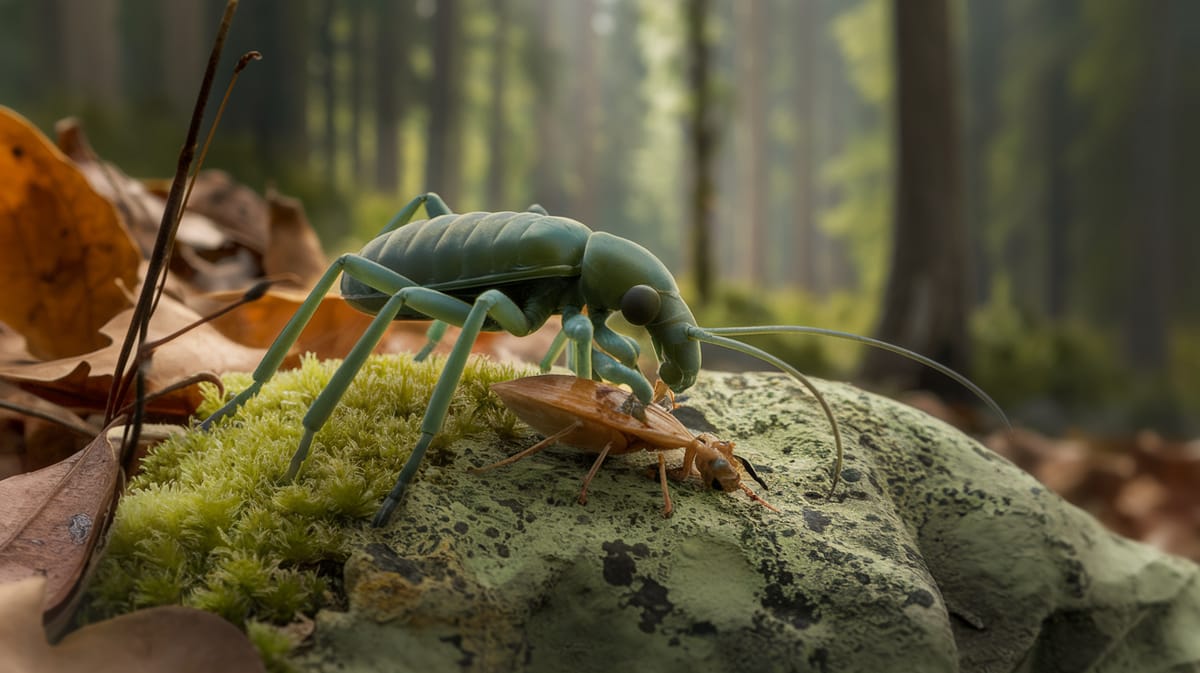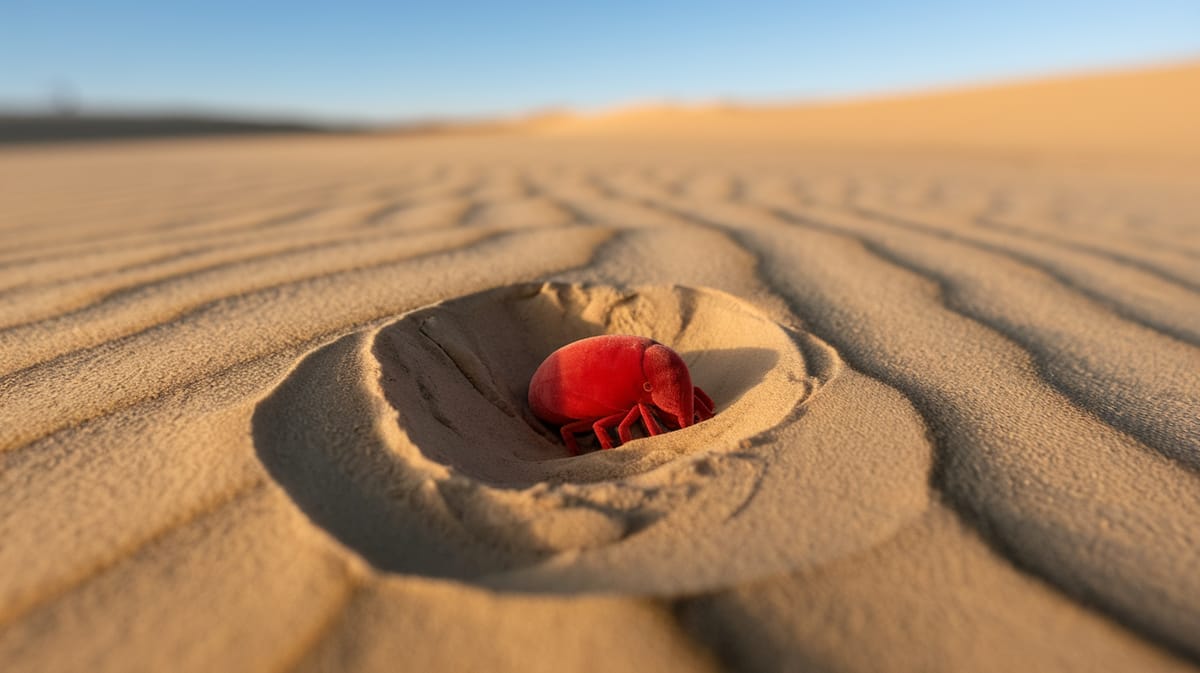Velvet Mite
Vibrantly red and often hidden in the soil, the Velvet Mite plays a crucial role in controlling pest populations and decomposing organic matter. Its striking appearance and ecological contributions are truly remarkable.

Key Insights at a Glance
Did You Know?
Taxonomy & Classification
Velvet mites, known for their vivid red color and unique parasitic larval stage, are key players in soil ecosystems, balancing predator and decomposer roles. Let's understand the evolutionary journey and classification of these remarkable Predators, Decomposers.
Global Presence
Velvet mites thrive globally, with diverse species found in various temperate regions, adapting to both humid and arid environments.
Evolutionary Adaptations
Velvet mites have evolved unique glandular hairs allowing them to retain moisture, aiding survival in harsh, dry conditions.
Lifecycle and Growth
A remarkable journey of transformation from Egg to Adult.
Egg
Velvet mite eggs are laid in soil, where they remain dormant until environmental conditions trigger hatching.
Larva
Larvae, bright red and tiny, parasitize insects and arachnids, crucial for nutrient intake and development.
Nymph
Nymphs resemble adults but lack reproductive capabilities, focusing on feeding and growth in the soil.
Adult
Adults are free-living predators, feeding on small insects and organic matter, playing a key role in soil ecology.
Dietary Habits
An adept forager with unique feeding strategies, it thrives on small arthropods and opportunistic prey in its environment.
| DIET TYPE | DESCRIPTION |
|---|---|
| Primary Diet | Primarily consumes tiny invertebrates like insects and larvae, playing a significant role in controlling pest populations. |
| Secondary Diet | Occasionally feeds on plant material and fungi, particularly when invertebrate prey is scarce. |
| Occasional | In rare situations, it scavenges on decaying organic matter, adapting its diet based on availability. |

Behaviour and Adaptations
Discover the fascinating traits that enable the Velvet Mite to thrive in its environment.
Moisture Retention
Adapted to arid habitats, Velvet Mites efficiently conserve water.
Predatory Efficiency
Skilled at hunting small insects, ensuring survival.
Vibrant Warning Colors
Bright red coloration deters predators by signaling toxicity.
Ecosystem Impact
Supporting ecosystem balance through the contributions of Velvet Mites.
Soil Aerators
Improve soil health by burrowing, enhancing aeration and nutrient distribution.
Decomposer Aids
Break down organic matter, speeding up decomposition processes in the ecosystem.
Predator Role
Control populations of smaller arthropods and pests, aiding biodiversity.
Conservation Challenges
Addressing key threats to Velvet Mite populations and their ecosystems.
Habitat Loss
Urbanization and land conversion reduce natural habitats, affecting mite populations.
Chemical Exposure
Pesticides and pollutants disrupt Velvet Mite ecosystems and health.
Climate Change
Altered weather patterns affect the mites' breeding and survival.
Frequently Asked Questions
How long do Velvet Mite live?
Velvet mites typically live for about two to three months. Their lifespan is short but significant, as they play an essential role in the ecosystem by helping to control other insect populations.
What do Velvet Mite eat?
Velvet mites primarily feed on small insects and their larvae, as well as organic matter. They are also known to consume eggs of pests, making them beneficial for controlling pest populations in their habitats.
Are Velvet Mite poisonous?
Velvet mites are not poisonous to humans. They do not pose any threat to people or pets. Their vibrant red color might suggest danger, but it is mainly a deterrent to potential predators.
Are Velvet Mite endangered?
Velvet mites are not currently considered endangered. They are found in various regions and are generally abundant in their preferred habitats, such as soil and leaf litter in tropical and subtropical areas.
What do Velvet Mite symbolize?
In some cultures, velvet mites symbolize the arrival of the monsoon season and are considered a good omen. They are often associated with fertility and the abundance of rain, as they appear prominently during rainy periods.
Do Velvet Mite bite?
Velvet mites do not bite humans. They are harmless to people and primarily focus on their natural diet of small insects and organic matter. Their role in the ecosystem is beneficial, as they help control pest populations.
What color are Velvet Mite?
Velvet mites are typically bright red. This striking color serves as a warning to potential predators, indicating that they might be unpalatable or toxic, even though they are harmless to humans.
Does a Velvet Mite have wings?
Velvet mites do not have wings. They are arachnids, more closely related to spiders and ticks, and rely on their legs for movement. Their body structure is adapted for crawling through soil and leaf litter.
What does a Velvet Mite look like?
Velvet mites are small, with a vibrant red, velvety body. They have eight legs, similar to other arachnids, and lack wings. Their appearance is distinctive and helps them stand out in their natural environments.
Is a Velvet Mite an insect?
No, a velvet mite is not an insect. It is an arachnid, which places it in the same class as spiders and ticks. Arachnids are characterized by having eight legs, while insects typically have six.
Related Insects
Discover insects with similar characteristics to Velvet Mite - including shared habitats, diets, and taxonomic classifications
Share this profile
Help others discover Velvet Mite
